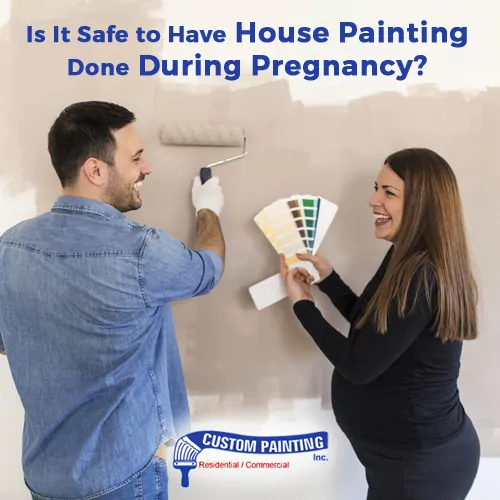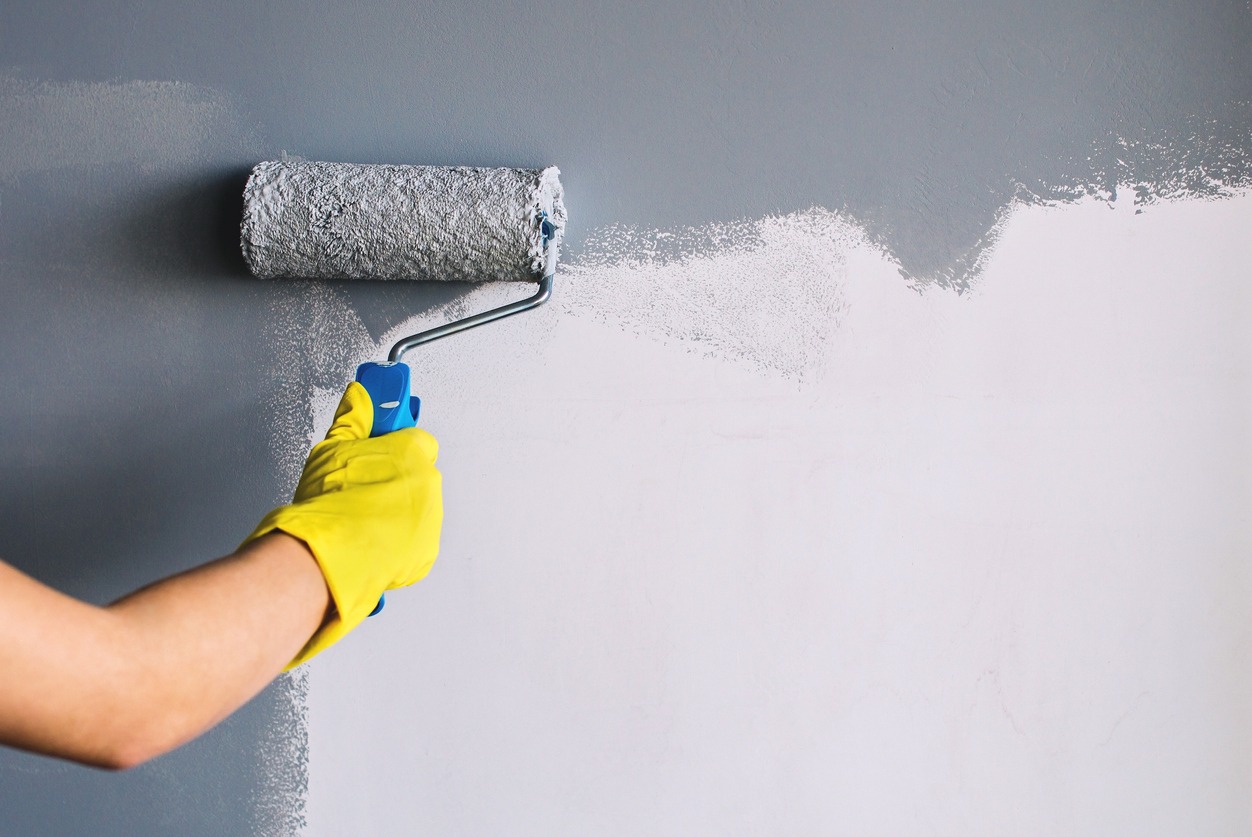If you are thinking of painting your home in Danville, CA, but you’re not sure if it is a good time because you or someone in your home is pregnant, we are here to help you. As professional painters with extensive experience, we understand the unique considerations that come into play when undertaking house painting projects during pregnancy. The safety and well-being of expectant mothers are paramount, and navigating the complexities of paint types, exposure risks, and appropriate safety measures is essential.
In this article, we will explore the critical aspects of house painting in the context of pregnancy. We will offer expert insights and guidance in order to provide clear and informed advice to those doing house painting in Danville during this sensitive period. This way, we can ensure that health and safety are at the forefront of any such project. Whether you are considering a DIY project or hiring professional painters, understanding the risks and safety measures associated with house painting during this crucial time is important.
Understanding the Risks
When considering house painting during pregnancy, it’s crucial to be aware of the potential risks involved, primarily related to exposure to various paint chemicals and fumes.
Types of Paint and Chemical Composition
- Oil-Based Paints: These contain solvents and chemicals like toluene and xylene, which emit strong fumes (Volatile Organic Compounds or VOCs) known to be harmful if inhaled in large amounts or over prolonged periods.
- Water-Based Paints (Latex and Acrylic): Generally considered safer than oil-based paints, these still release some VOCs and other chemicals in lower quantities.
- Lead-Based Paints: Although banned in residential use since 1978 in the United States, lead-based paints still exist in older homes. Exposure to lead dust during renovation can be extremely hazardous, particularly during pregnancy.
Impact of Volatile Organic Compounds (VOCs)
- Health Implications: VOCs can cause headaches, dizziness, and respiratory issues and may impact the immune system. During pregnancy, there’s an increased risk as these chemicals can potentially affect fetal development.
- Long-Term Exposure Risks: Prolonged exposure to high levels of VOCs can lead to more severe health issues, both for the expecting mother and the developing fetus.
Expert Opinions and Studies
- Medical Studies: Various studies have suggested potential links between exposure to paint fumes and certain health risks during pregnancy, including low birth weight and developmental delays.
- Guidance from Health Organizations: Organizations like the Environmental Protection Agency (EPA) and the Occupational Safety and Health Administration (OSHA) provide exposure limits and safety precautions guidelines.
Considering Sensitive Individuals
- Increased Sensitivity During Pregnancy: Pregnant women often experience heightened sensitivity to smells and chemicals, which can exacerbate the discomfort and potential risks associated with paint fumes.
- Individual Health Conditions: Expectant mothers with pre-existing conditions like asthma or allergies may be more susceptible to the effects of VOCs and other paint-related chemicals.
Types of Paint and Pregnancy Safety
When having your home painted during pregnancy, understanding the safety profile of different types of paint is essential. Each type varies in its chemical composition and the potential risks it poses.
Water-Based Paints (Latex and Acrylic)
- Composition: These paints are primarily composed of water as the solvent, making them less toxic and lower in VOCs compared to oil-based paints.
- Safety Profile: Generally considered safer for pregnant women, especially if labeled as low-VOC or no-VOC. However, it’s still advisable to minimize exposure.
- Precautions: Ensure good ventilation and consider wearing a mask while painting or being in freshly painted rooms.
Oil-Based Paints
- Usage: Found primarily in older homes, their use has been banned in residential properties in many countries.
- Risks During Pregnancy: Lead exposure can be extremely harmful to both the mother and fetus, causing developmental issues and other severe health problems.
- Precautions: If your home has old layers of lead paint, it’s crucial to avoid disturbing them. Consult a professional for safe removal.
Low-VOC and No-VOC Paints
- Characteristics: These paints have reduced or minimal volatile organic compounds.
- Safety During Pregnancy: They are the safest options for pregnant women, significantly lowering the risk of inhaling harmful fumes.
- Choosing Paints: Always check labels for VOC content and opt for paints specifically marketed as low-VOC or no-VOC.
Natural Paints
- Composition: Made from natural materials like clay, chalk, or lime.
- Pregnancy Safety: Generally safe for use during pregnancy, as they contain few synthetic chemicals and low VOC levels.
- Availability and Use: These might be harder to find and can vary in performance compared to conventional paints.
When selecting paint for a home project, it’s advisable to consult with painting professionals or healthcare providers. Always check the paint labels for any health warnings and VOC content. Also, if possible, plan painting projects for the second trimester when the risk of chemical exposure is generally lower.
Precautionary Measures
When undertaking house painting during pregnancy, it’s essential to implement various precautionary measures to safeguard the health of the mother-to-be and the unborn child. Below are some of the safety measures that you can follow:
Ensuring Proper Ventilation
Keep windows and doors open to allow fresh air circulation, reducing the concentration of paint fumes. Position fans strategically to direct fumes away from the painting area and towards open windows or doors.
Use of Protective Gear
Wear a mask or respirator specifically designed to filter out paint fumes and particulates. Wear long-sleeved shirts, gloves, and other protective clothing to minimize skin contact with paint.
Limit Exposure Time
Break the painting job into shorter sessions to limit prolonged exposure to paint fumes. If possible, pregnant women should avoid being directly involved in the painting process.
Select the Right Time
Some suggest that painting should be done during the second trimester when the risk of chemical exposure to the fetus is generally perceived to be lower. You can also schedule painting projects at a time when the expectant mother can be away from the home, such as during a short trip or stay with family.
Hiring Professionals
Consider hiring professional painters who are knowledgeable about safe painting practices during pregnancy. But make sure that you clearly communicate the need for safe, pregnancy-friendly painting practices.
Alternatives to Traditional Painting
For expectant mothers concerned about the risks associated with traditional house painting, there are also several alternative methods that you may consider. These can also refresh or change the look of a space without the need for paint.
- Wallpaper: Modern wallpapers come in a wide range of designs, colors, and textures, offering diverse aesthetic options. Many wallpaper adhesives are available in low-VOC formulations, making them a safer choice during pregnancy. However, it is best to consider hiring a professional for wallpaper installation to avoid personal exposure to adhesives and minimize stress.
- Wall Decals: Wall decals are a simple, non-permanent way to add designs to walls. They are particularly useful for nurseries or children’s rooms. Ensure the decals are made from non-toxic materials and use adhesives that are safe for pregnant women.
- Fabric Wall Hangings: Tapestries or fabric panels can add color and texture to walls without the need for painting. Creating fabric wall hangings can be a fun, low-risk DIY project that also allows for personal creativity.
- Reorganizing and Accenting with Décor: Sometimes, simply reorganizing furniture or adding new decor elements like curtains, cushions, and artwork can significantly alter the feel of a room. This approach requires no exposure to paint or solvents, making it a safe and instant way to refresh a space.
Doctor’s Advice
Every pregnancy is unique, and a healthcare provider can offer advice based on individual health conditions and pregnancy progress. Doctors can provide information on the potential risks associated with exposure to paint fumes and chemicals during pregnancy.
You may ask your doctor about the safety of paint types, exposure limits, the symptoms to watch for, and the precautionary measures to take. When considering house painting in Danville during pregnancy, seeking and following a doctor’s advice is the most important in ensuring the safety and well-being of both the mother and the developing fetus.
Conclusion
In conclusion, deciding to undertake house painting during pregnancy involves carefully considering various health and safety factors. It’s crucial for pregnant women and their families to be well-informed and proactive in their approach, prioritizing health and safety above aesthetic changes. By choosing the right type of paint, employing safe painting practices, or opting for alternative decorating methods, expectant mothers can significantly reduce the risks associated with paint fumes.
Consulting with healthcare providers and professional painters and adhering to local safety guidelines will ensure a successful painting project and a healthy pregnancy journey. In the end, the goal is to create a beautiful, safe home environment where new memories can be made and cherished


